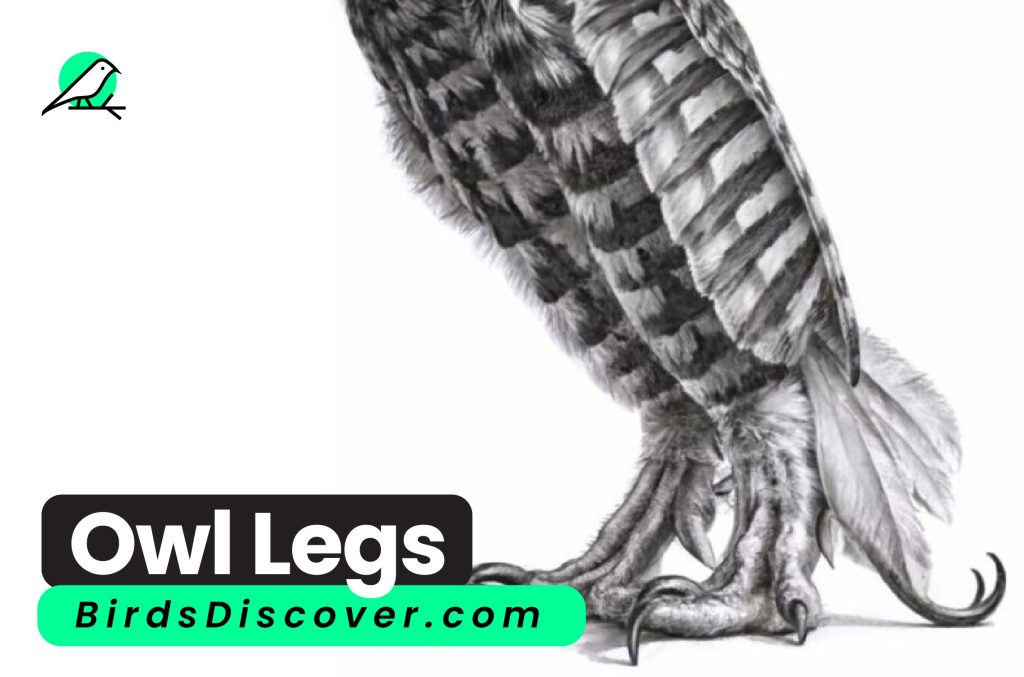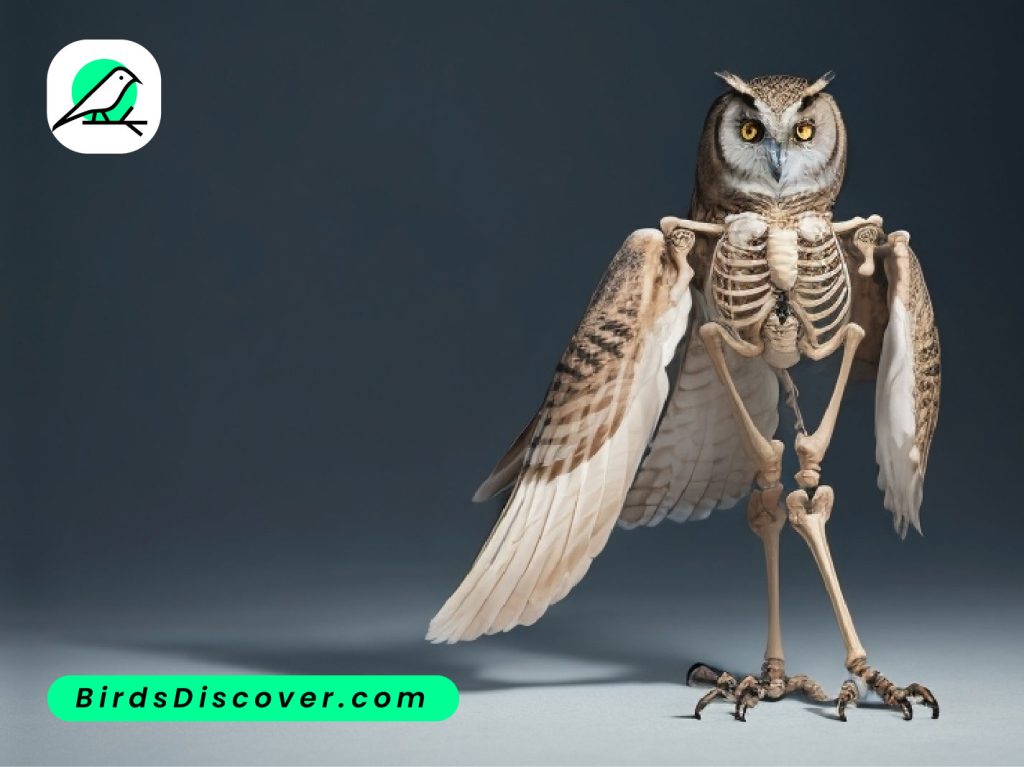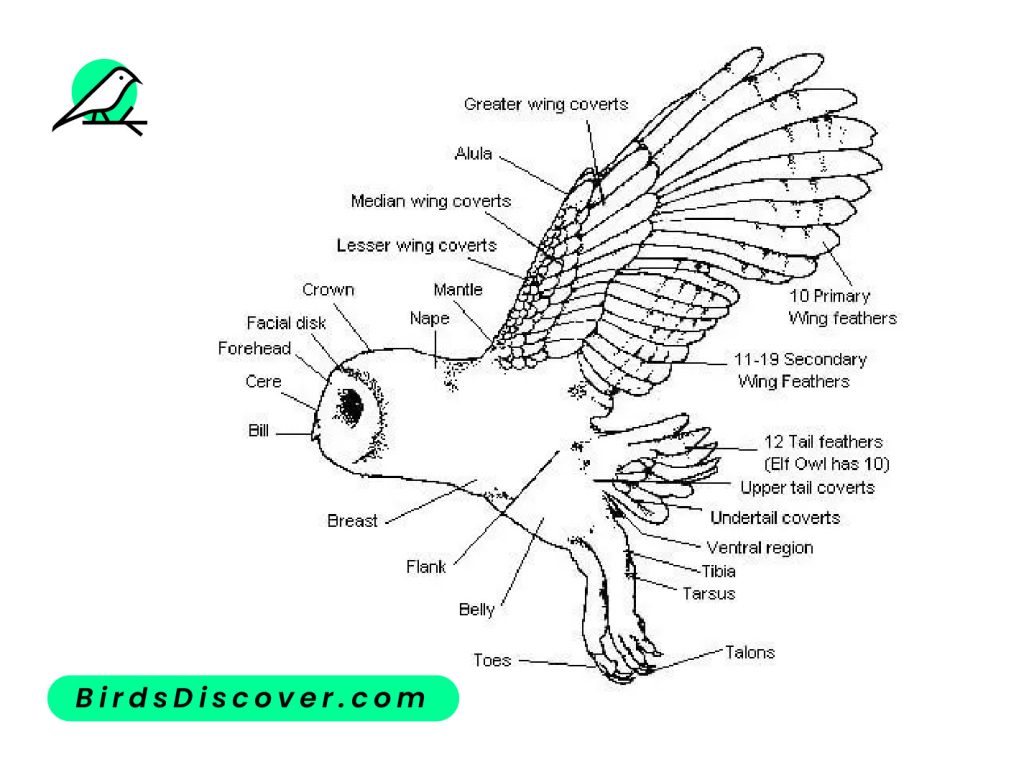Owl Legs Exploring Adaptations, Anatomy, and Evolution

Owl Legs Introduction
Owl legs are remarkable adaptations honed by evolution to suit their nocturnal lifestyle and predatory needs. Their anatomy showcases several unique features optimized for hunting efficiency and survival in diverse habitats. Sharp talons, designed for gripping prey, are complemented by strong, flexible joints allowing precise movements during flight and pouncing. The arrangement of their toes, with two pointing forward and two backward, enhances grip and stability, crucial for seizing and carrying prey mid-flight.
Evolutionary pressures have sculpted owl legs over millennia, refining them into efficient tools for survival. Their silent flight depends on specialized feathers and aerodynamic design, minimizing noise to stealthily ambush prey. Remarkably, their legs contribute not only to locomotion but also to sensory perception; feather-like structures aid in detecting subtle vibrations, aiding in hunting even in low-light conditions. The intricate interplay of adaptations in owl legs offers a compelling glimpse into the intricate dance between form and function in the natural world, showcasing the beauty of evolutionary innovation.

Interesting Facts
| Description |
|---|
| Owl legs contribute to their silent flight mechanism. Specialized feathers and aerodynamic design reduce noise. |
| Owls have a unique toe arrangement: two toes forward, two backward, enhancing grip and stability during flight. |
| Their powerful talons are designed for swift and effective grasping and immobilizing prey. |
| Owl legs play a role in sensory perception, with feather-like structures aiding in detecting vibrations for hunting. |
| These adaptations enable owls to hunt effectively in low-light conditions, showcasing their nocturnal lifestyle. |
| The flexibility of owl leg joints allows precise movements during flight, essential for capturing prey mid-flight. |
| Owl legs are strong and sturdy, supporting the bird’s body weight during perching and hunting activities. |
| Some owl species have feathered legs, providing insulation in cold climates and camouflage against tree bark. |
| The arrangement of blood vessels in owl legs minimizes heat loss, helping to regulate body temperature. |
| Owls’ legs are well-adapted for both terrestrial locomotion and aerial pursuits, contributing to their hunting success. |
Anatomy of Owl Legs
| Anatomy Feature | Description |
|---|---|
| Talons | Powerful, sharp claws designed for grasping and immobilizing prey. Essential for hunting and capturing prey mid-flight. |
| Toe Arrangement | Unique configuration with two toes pointing forward and two backward. Enhances grip on prey and provides stability during flight and perching. |
| Flexibility | Highly flexible joints allowing precise movements during flight and when capturing prey. Crucial for hunting success. |
| Feathers | Some owl species have feathered legs, providing insulation in cold climates and aiding camouflage against tree bark or other surfaces. |
| Sensory Structures | Feather-like structures on owl legs aid in sensory perception, helping owls detect subtle vibrations. Assist in locating prey, particularly in low-light conditions. |
| Blood Vessels | Arrangement of blood vessels helps regulate body temperature, crucial for maintaining optimal physiological function during hunting activities. |
| Strength and Stability | Owl legs are strong and sturdy, capable of supporting the bird’s body weight during perching, hunting, and other activities. |
Structure of Owl Legs

| Component | Description |
|---|---|
| Bones | The structure includes bones such as the femur, tibia, and fibula in humans, providing support and forming joints like the knee and ankle for mobility. |
| Muscles | Muscles like the quadriceps and hamstrings work together to generate movement, providing the force necessary for walking, running, and other activities. |
| Ligaments | Ligaments connect bones to each other, providing stability to joints and preventing excessive movement that could lead to injury. |
| Tendons | Tendons connect muscles to bones, transmitting forces generated by muscle contractions to produce movement and maintain posture. |
| Blood Vessels | Blood vessels supply oxygen and nutrients to leg tissues, while also removing waste products. They also play a role in regulating temperature and maintaining homeostasis. |
The structure of legs, whether in humans or animals, is a marvel of biomechanical engineering tailored to meet specific functional demands. Comprising bones, muscles, tendons, ligaments, and blood vessels, legs provide support, mobility, and stability. In humans, the lower limbs consist of the femur, tibia, fibula, and intricate joints like the knee and ankle, facilitating bipedal locomotion. Muscles such as the quadriceps and hamstrings work synergistically to generate movement, while ligaments and tendons provide stability and transmit forces.
In animals like owls, the structure of legs is adapted for diverse functions, from perching and walking to hunting and flight. Powerful talons and a unique toe arrangement enable gripping prey securely, while flexible joints allow for agile movements during flight and hunting. Feathered legs provide insulation and aid in camouflage. The intricate network of blood vessels helps regulate temperature, essential for sustaining energy during hunting.
Overall, the structure of legs exemplifies the remarkable adaptation of anatomical features to meet the locomotor and functional needs of diverse species.
Owl Comparison with other Birds
| Characteristic | Owls | Other Birds (General) |
|---|---|---|
| Order | Strigiformes (Owls) | Various orders (e.g., Passeriformes, Falconiformes) |
| Nocturnal/Diurnal | Nocturnal | Diurnal |
| Feeding Behavior | Carnivorous predators | Varies (insectivores, herbivores, carnivores) |
| Eye Position | Front-facing for binocular vision | Lateral placement |
| Head Rotation | Highly flexible (up to 270 degrees) | Limited compared to owls |
| Flight Style | Silent flight; powerful and maneuverable | Varies (gliding, soaring, flapping) |
| Wing Shape | Broad wings with soft fringes | Varies (elongated for soaring, pointed for speed) |
| Feet and Talons | Strong feet with sharp talons | Adapted for perching, grasping, or swimming |
| Habitat | Diverse (forests, deserts, grasslands) | Diverse (forests, wetlands, open plains) |
| Nesting Habits | Nest in trees, caves, or burrows | Nest in trees, on cliffs, on the ground |
| Vocalizations | Distinct hooting or screeching calls | Varied (songs, calls, chirps) |
| Social Behavior | Mostly solitary; some species monogamous | Varies (solitary, social, flocking) |
| Predator Adaptations | Exceptional night vision; silent hunting | Sharp vision; agility in flight |
| Species Diversity | Approximately 250 species worldwide | Countless species across numerous families |

Adaptive Features
Adaptive features refer to the specialized characteristics or traits that organisms develop over time through evolution to better survive and thrive in their environments. These features enable organisms to adapt to specific challenges or opportunities presented by their habitats. Here are examples of adaptive features in various organisms:
- Camouflage: Many animals, such as chameleons, octopuses, and certain insects, have evolved coloration and patterns that allow them to blend into their surroundings, providing them with camouflage to avoid predators or ambush prey.
- Mimicry: Species like the viceroy butterfly mimic the appearance of toxic or unpalatable species (like the monarch butterfly) to deter predators. This adaptive strategy increases their chances of survival by reducing predation.
- Cryptic Behavior: Some animals, such as the cuttlefish or the flounder, employ cryptic behavior where they adjust their body shape or posture to mimic objects in their environment, making them difficult for predators or prey to detect.
- Hibernation: Certain mammals, like bears and ground squirrels, enter a state of hibernation during winter months. This adaptive feature allows them to conserve energy and survive periods of food scarcity when temperatures drop.
- Desert Adaptations: Organisms in desert environments, such as cacti and camels, have evolved specialized adaptations like water-storing tissues, reduced surface area to minimize water loss, and behavioral strategies to avoid extreme heat during the day.
- Aquatic Adaptations: Marine animals like whales have adapted to life in water with streamlined bodies for efficient swimming, insulating blubber to regulate body temperature, and blowholes for efficient breathing at the surface.
- Echolocation: Bats and certain marine mammals like dolphins have developed echolocation, emitting high-frequency sound waves and interpreting the echoes to navigate and locate prey in environments where visibility is limited.
These examples illustrate how organisms across different ecosystems have evolved adaptive features that enhance their survival, reproduction, and success in their respective habitats. Adaptive features are shaped by natural selection, where individuals with advantageous traits are more likely to survive and pass on their genes to the next generation.
5 Facts About Owls
- Nocturnal Predators: Owls are primarily nocturnal birds of prey, meaning they hunt during the night. Their specialized adaptations such as keen nocturnal vision and silent flight allow them to efficiently capture prey like rodents, insects, and small mammals.
- Exceptional Hearing: Owls have excellent hearing capabilities due to their asymmetrical ear placements on their skull. This adaptation helps them locate prey accurately in low-light conditions where vision may be limited.
- Silent Flight: Owls possess specialized wing feathers that reduce turbulence and noise during flight. This silent flight adaptation aids them in approaching prey silently, making them highly effective hunters.
- Adaptability: Owls are found in diverse habitats worldwide, including forests, deserts, tundras, and urban areas. Their ability to adapt to various environments contributes to their widespread distribution.
- Symbolism and Folklore: Owls have been revered and feared across cultures. They are often associated with wisdom, intuition, and mystery in folklore and mythology. Their distinct appearance and nocturnal habits have also led to superstitions and beliefs in many societies.

Benefits of Owl Legs
Owl legs provide several distinct benefits that contribute to their survival and predatory success:
- Grasping and Holding Prey: Owl legs are equipped with powerful, sharp talons (claws) that enable them to grasp and hold onto prey securely. This adaptation allows owls to capture a wide range of prey items, including small mammals, birds, insects, and even fish.
- Silent Flight: Owl legs play a role in silent flight, which is facilitated by their ability to grip and stabilize perches without causing disturbance. This silent flight adaptation enhances their hunting efficiency by allowing them to approach prey without alerting them.
- Perching and Stability: Owls are adept at perching on various surfaces, including tree branches, rocks, and human structures. Their legs are designed to maintain balance and stability while perched, even in adverse weather conditions.
- Predatory Success: The strength and agility of owl legs contribute significantly to their predatory success. Owls can swiftly and accurately strike at prey with their talons, immobilizing them quickly and efficiently.
- Adaptation to Different Environments: Owl legs are adaptable to different environments, from dense forests to open grasslands. Their versatility in perching and hunting allows them to thrive in diverse habitats around the world.
- Resting and Sleeping Adaptations: Owls have specialized tendons in their legs that automatically lock their talons around a perch when they bend their legs to sit or sleep. This adaptation allows them to rest comfortably and securely without exerting continuous effort.
Overall, the unique adaptations of owl legs enhance their hunting prowess, facilitate silent flight, and enable them to thrive in various ecological niches. These features underscore the evolutionary advantages that owl legs provide in their roles as apex predators in many ecosystems.
FAQS
What is the purpose of owl legs appearing long and thin?
Owl legs are designed to be long and thin to facilitate gripping and perching. This adaptation allows owls to securely grasp onto branches or prey items, enhancing their hunting capabilities and agility in various environments.
How do owls use their talons in hunting?
Owls use their sharp talons (claws) to capture and immobilize prey. These powerful talons enable owls to grasp onto small mammals, birds, insects, and other prey items, allowing them to hunt efficiently.
Do owl legs contribute to silent flight?
Yes, owl legs play a role in silent flight. Owls have specialized adaptations in their legs and feet that help them grip perches silently. This reduces noise during flight, allowing owls to approach prey stealthily without alerting them.
Can owls walk on the ground effectively?
No, owls are not well-adapted for walking on the ground. Their legs are designed primarily for perching and flying rather than walking. Owls may hop or take short flights between perches but are generally not proficient walkers.
How do owls prevent themselves from falling off their perch while sleeping?
Owls have a unique tendon locking mechanism in their legs. When they bend their legs to sit or sleep, this mechanism automatically locks their talons around the perch. This secure grip keeps owls firmly in place, preventing them from falling off while resting.




